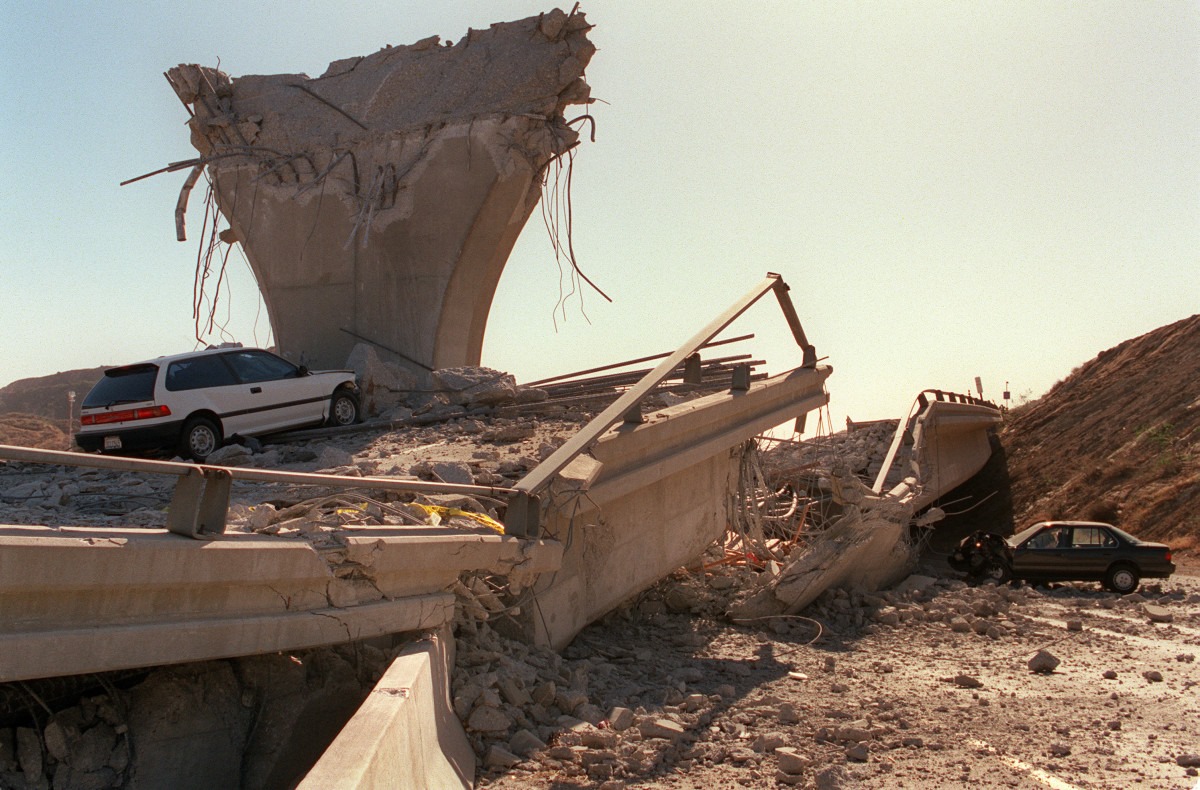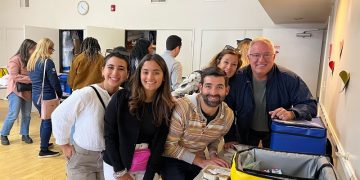
Civilization, as we know it, requires many things, but the most critical and fundamental is an uninterrupted supply of three basic factors: food, clean water, and energy. If you have a steady supply of those (along with clean air) you can generally get your other basic needs met: clothing, housing, employment, mobility, education, Taylor Swift concerts, etc. etc. But the opposite is also true.
Any interruption of that steady supply cripples civilization and eventually crushes it. It does not matter if the interruption is caused by human carelessness or greed (think global warming), or by criminal human intention (think the war in Gaza or Ukraine), or by nature (think earthquakes or tidal waves) whenever that essential supply of those three factors is interrupted, the result is always the same. Sooner or later, we get: war, migration, disease, poverty, famine, death, and incalculable human suffering.
Seismic Threat Overdue
For our City, the biggest long-term threat to our supply of food, water, and energy is the San Andreas Fault. About every quarter century, that fault system, along with its many cousins, will shake the Los Angeles basin with an earthquake of 6.0 or greater. Computer models suggest up to an 8.3 is possible in LA, but the last one was the Northridge earthquake in 1994 rated at 6.7.
Needless to say, we are “overdue” for another large shake. While the LA Basin is moving northward at an average of about 1 1/4” per year; the movement is not a smooth slide but a
series of destructive jerks, often of several feet, that we experience as an earthquake.
The reason this fault system is so dangerous is that not only does it regularly kill and maim our residents, but when it does snap, it can break a series of pipes, aqueducts, highways, and transmission lines that sustain our City and the 13 million residents of the greater LA regional area. That fault system is, unfortunately, perfectly positioned to sever our major arteries of water, food, and energy that come from sources east and north of us. Two aqueducts that supply us with about a quarter of our City’s water from the Sierras and the Colorado
River cross the Fault.
The seismically vulnerable Highway 5, which was severely damaged by the Northridge Quake (see picture above), connects us to the Central Valley, our major food source. And finally, that fault system crosses natural gas pipelines and transmission lines that connect us to hydropower (Hoover Dam) and vast fields of solar collectors and windmills located in the
deserts east and north of us.
Many Santa Monica businesses and residents already pay extra in their monthly power bills through the Clean Power Alliance to provide us the majority of our renewably (hydro, wind, and solar) generated electricity. However, those distant renewable power sources unfortunately are
more vulnerable to seismic interruption than closer local fossil fuel power plants.
Threats already here. ??
While periodic seismic events are a long-term threat to our constant water, food, and energy needs, the short-term threats are already present and impacting us today. For example, the water shortage caused by human-generated global warming has created a heatwave, cooking both the Central Valley (Fresno) reached 112 degrees last weekend) and the entire seven-state Colorado River watershed, which in turn is threatening our current water, food, and hydropower
supplies. You can see this every two months when your water bill is going up at 20% a year (about 7 times the rate of inflation). This increase is designed to do five things. First is to encourage water conservation because of the higher price.
The second is to double the cost of water to businesses and residents in five years. (Explain why?) Third, this cost increase is designed to shift the huge burden of water infrastructure construction (new wells, bigger water mains, etc.) from developers to residents. The developers want you to pay the large costs of adding to the water infrastructure for the 8895 new Sacramento-mandated units to our City ( a nominal 20% population increase). Fourth, when the water finally becomes even more critical than it is now, there will be a bidding war for each increasingly expensive drop among the 88 cities LA County served by the Metropolitan Water District (MWD).
With the higher water fees, our City will be able to outbid many other cities to get a larger share of that vanishingly scarce resource. And finally fifth, with the water rates doubled, it will position the City to start the desalinization process since desalinated ocean water now costs about twice river and well water. Naturally, the desalinization plant will require another citizen paid for bond. Needless to say, desalinization comes with its own environmental downsides effecting marine life.
The lesson here is that our City is fortunate to be able to get 3/4 of its water from local wells and recycling at this time. If a quake knocks out the entire MWD water supply, but all our wells survive, we could still stagger on with the remaining 75% supply for the weeks or months it takes to fix the water system.
During that reconstruction period, we could, for example, pump out more water from our wells, temporarily dropping below the recharging level. In fact, up until the last few years, the City was making good progress in reaching water neutrality (no added consumption) and actually starting to reduce the remaining 25% of imported water.
This was particularly notable given the increasing development that has already occurred in the last few years. Had we stuck to our water sustainability plan and reached zero imports by 2023, we would have reached full potential seismic survivability in water independence. However,
when the State crammed 9000 new units in the next 8 years into our built-out City, our water sustainability plan blew out the window. Our potential seismic shortfall ballooned from about 25% to about 35%. So, to please Sacramento, the pre-2020 city council gave up much of the water resilience we would need to survive in the seismic jelly bowl we live in. Sacramento’s water goal for us is even more hypocritical: that we should reduce our water consumption from all sources by 6% by 2040 while simultaneously increasing population by 20% by 2028.
Its highly unlikely that any increased efficiency, reduced demand, or water recycling
will close a putative 35% gap and then still reduce water consumption by another
6%. We need to get used to living with a potential self-inflicted water shortage Disaster.
Next week’s article is about energy survivability.
By Mario Fonda-Bonardi AIA
S.M.a.r.t Santa Monica Architects for a Responsible Tomorrow
Thane Roberts, Architect, Mario Fonda-Bonardi AIA, Robert H. Taylor AIA, Architect, Dan Jansenson, Architect & Building and Fire-Life Safety Commission, Samuel Tolkin Architect & Planning Commissioner, Michael Jolly, AIR-CRE Marie Standing. Jack Hillbrand AIA
For previous articles, see www.santamonicaarch.wordpress.com/writing












